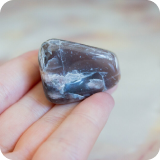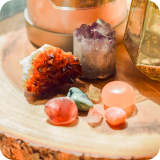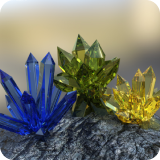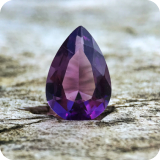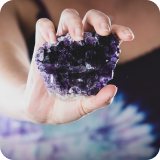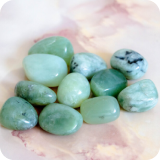- Understanding Crystal Formation
- How to Dig Your Crystals?
- Gemstone Getaways: U.S. Destinations Every Rockhound Must Visit
- Tips When Doing Rockhounding or Digging Your Gemstones
- Final Thoughts
- FAQs
Ever thought about finding hidden stones in the ground? Many people, just like you, have found beautiful stones when they least expected it. Imagine finding a shiny stone or a clear crystal while walking outside! So, how do you begin? And which stones can you find easily?
This guide gives you the basics of looking for crystals. It’s all about patience, using simple tools, and knowing where to look. Stones like Quartz and Amethyst are good ones to start with.
Dive into the world of crystals with this easy guide. Great for anyone who loves nature and surprises!
Understanding Crystal Formation
Crystals are like nature’s jewelry, forming in various ways beneath our feet. Some crystals come to life when liquids from the earth cool and start to harden. Others grow when water in the ground picks up minerals and then evaporates, leaving the minerals behind to form crystals.
You might be surprised that some crystals can be found right on the surface! Walking around, you might spot shiny stones or colorful gems lying on the soil. But many crystals are hidden deeper down. To find these, you’ll need to dig into the ground.
If you’re considering going on a crystal hunt, remember that some places require permission first. It’s always a good idea to check local rules before digging.
The US is home to many places where you can find crystals. For example, Arkansas is known for its Clear Quartz, while you can find beautiful Amethysts in North Carolina. But the world is full of crystal treasures, too! Countries like Brazil, Madagascar, and Russia have rich lands filled with crystals.
In short, the world beneath our feet is sparkling with hidden gems. Whether in the US or traveling abroad, there’s always a chance to discover nature’s wonders. Just remember to be respectful and check if you need permission to dig.
How to Dig Your Crystals?
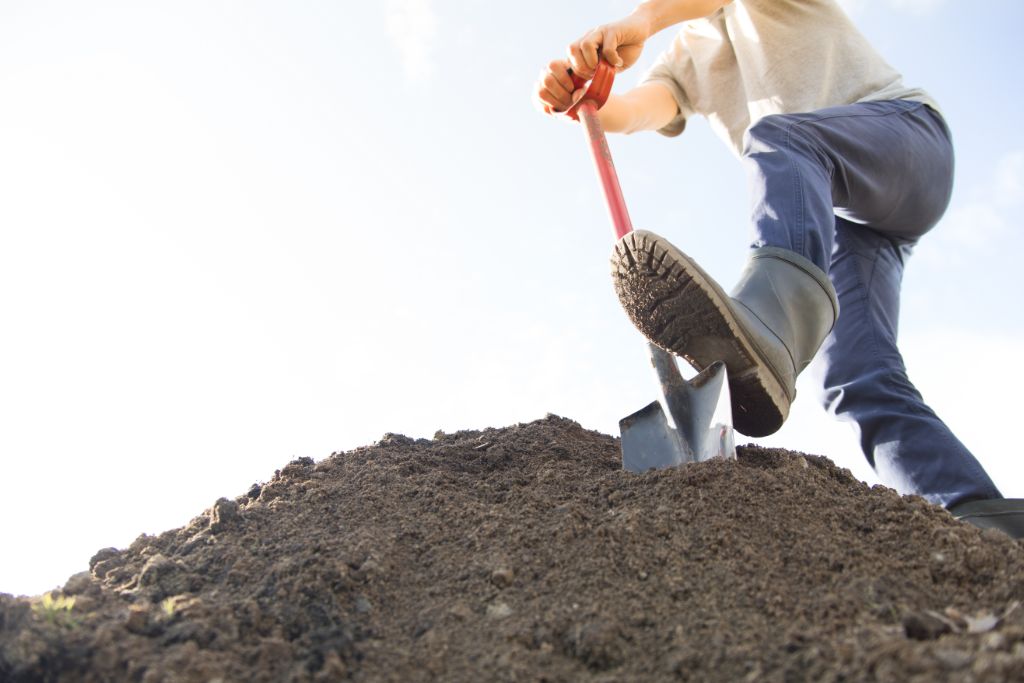
Setting out on a crystal-digging adventure is both thrilling and rewarding. Before you start, however, it’s essential to prepare adequately. This means gathering the right tools and understanding where you can dig.
Remember, while some places welcome crystal hunters, others might have restrictions. Always check local laws and regulations to ensure you’re not trespassing or breaking any rules.
Best Tools to Dig for Crystals
Gemstone hunting or rockhounding is an exciting hobby that requires specific tools to ensure success and safety. These tools not only help extract the crystals without damaging them but also ensure the collector’s safety.
Here’s a list of essential tools for digging crystals and their applications:
Rock Hammers
These are fundamental tools for any rockhound. They come in various types tailored for different tasks:
- Pointed-Tip Rock Hammer: Ideal for precision work in chipping large rocks.
- Chisel-Tip Rock Hammer: Suitable for breaking larger rocks.
- Heavy Rock Hammer: Perfect for breaking up more substantial stones but can be challenging to control.
- Sledgehammer: Also used for breaking large rocks.
- Crack Hammer: Best for breaking up smaller rocks or chipping away at larger rocks to create smaller pieces.
Rockhounding Backpack
A backpack is crucial when setting out on a rockhounding adventure. It helps you conveniently carry all your tools, food, water, and the precious specimens you find. Many rockhounds prefer sturdy and spacious backpacks to ensure everything fits and is easily accessible.
Chisel
A chisel is a key tool for rock collectors. Some rocks need a careful touch. A pointed chisel helps you get specific parts of a rock. A wide-bladed chisel is good for breaking rocks in straight lines. This way, you can get the best pieces without much damage.
Gloves
Gloves are important. They protect your hands from sharp rocks. They also help you grip things better. Leather gloves are good for avoiding cuts. If it’s cold, thick rubber gloves keep your hands warm.
Gardening Tools
Gardening tools are very helpful for rock collectors. They are light and easy to carry. A hand shovel helps you move dirt. A hand rake is good for looking through the soil. Tools like a hand weeder or a flat-head screwdriver can help get rocks out from tight spots.
Eye Protection
Protecting your eyes is a must. When you break rocks, small pieces can fly up. Wearing safety goggles stops these pieces from hurting your eyes.
Folding Shovel
Some dig sites are far away. A folding shovel is easy to carry because it’s small. But it’s big enough to help you dig and find hidden rocks when you open it.
Spray Bottle
Dirt can hide beautiful rocks. A spray bottle filled with water helps clean them. This way, you can see the rocks. It’s also nice to have on a hot day to cool down.
Stepwise Guide to Dig Your Crystals

Digging for crystals is a fun and rewarding adventure. This guide gives you easy steps to start and succeed. It covers where to go, what tools to use, and how to find hidden gems safely.
Step 1: Choose Your Location
Best Practice: Research popular rockhounding dig sites in your area or desired destination. National parks, public land, and old mines are often good places to start. Always ensure the location allows you to collect rocks.
Step 2: Get Permission
Best Practice: Always obtain permission first if you’re considering digging on private land or in specific areas like the Crater of Diamonds State Park. Some places, especially national parks, may require a small fee or permit. Respect all rules and guidelines.
Step 3: Prepare Your Tools
Best Practice: Pack essential tools like rock hammers, chisels, gloves, and safety goggles. A rock hammer and pry bar are crucial for helping remove larger rocks. Ensure tools are in good condition for collecting high-quality rocks and minerals.
Step 4: Safety First
Best Practice: Always prioritize safety. Wear protective gear, and if you’re in unfamiliar territory like a road cut, consider going with a group or guide, perhaps from a mineral society.
Step 5: Start Digging
Best Practice: Begin with gentle digs to understand the type of rocks and minerals in the area. Use the rock hammer for digging and the chisel for more precise breaks. Always be patient and avoid using excessive force to find crystals of specific types.
Step 6: Clean and Examine Your Finds
Best Practice: Use a spray bottle to clean dirt off the mineral specimens. Once clean, use a field guide to identify your finds. Proper identification can add value to your mineral collection.
Step 7: Store Your Crystals Properly
Best Practice: Use soft cloth or tissue to wrap individual minerals and fossils. Store them in a sturdy box to prevent damage. Labeling each specimen with the date and location can benefit future reference.
Step 8: Respect the Environment
Best Practice: Always clean up, especially if you’re a responsible rockhound. Fill any holes you’ve dug and pack up all the trash. Leave the location as you found it.
Step 9: Document Your Adventure
Best Practice: Keep a journal or log of your rockhounding trips. Note the date, location, weather conditions, and your findings. This serves as a personal record and can help you identify patterns or hotspots for future trips.
Step 10: Continue Learning
Best Practice: Join rockhounding clubs or mineral societies, attend workshops, or read books on the subject. The more you learn, the better your chances of finding rare and valuable crystals in the future.
Gemstone Getaways: U.S. Destinations Every Rockhound Must Visit

Enter the exciting world of gem collecting with our guide’s help to the top United States locations. Whether you’re a seasoned treasure hunter or just starting, you’re in for a thrilling time at any of these spots.
Emerald Hollow Mine, Hiddenite, North Carolina
Crystals Found: Emeralds, Sapphire, Tourmaline, Garnet, Topaz, and Aquamarine.
This is the only public Emerald mine in the United States, situated in Hiddenite. Numerous other gemstones besides Emeralds are still to be discovered. The location mine has sections for individual prospecting and sluiceways for collecting discoveries.
Crater of Diamonds State Park, Murfreesboro, Arkansas
Crystals Found: Diamonds
The park offers rental equipment, but bringing your own can be more cost-effective. Visit after a rainfall, as the wet ground can make Diamonds easier to spot. Remember sunscreen and a hat!
Gem Mountain, Spruce Pine, North Carolina
Crystals Found: Aquamarines, Rubies, and Moonstones.
Located in the heart of the Blue Ridge Mountains, the panoramic views complement the gem-hunting experience. Attend one of the on-site gemologist sessions to learn more about your finds. Early mornings are usually less crowded, offering a more peaceful gem-hunting experience.
Cherokee Ruby & Sapphire Mine, Franklin, North Carolina
Crystals Found: Rubies, Sapphires, Garnets, and Rutile.
Nestled in the Smoky Mountains of Franklin, this mine offers a serene environment to hunt for gems. The mine provides buckets with rich soil, increasing your chances of finding gems. It’s advisable to wear old clothes as sluicing can get messy.
Gem Mountain Sapphire Mine, Philipsburg, Montana
Crystals Found: Sapphires
The beautiful backdrop of Montana makes this mine an ideal destination for anybody interested in Sapphires. Sapphires can be found in the mine’s gravel sacks for sale. Using the on-site screening decks improves the possibility of discovering larger stones.
Morefield Mine, Amelia, Virginia
Crystals Found: Amazonite, Garnet, Amethyst, Beryl, and Topaz.
A short drive from Richmond, this mine is surrounded by Virginia’s lush woodlands. The mine is known for its tunnels, so consider taking a guided tour to learn more about its history and geology. Bring along a small brush to clean off the gems you find.
Tips When Doing Rockhounding or Digging Your Gemstones

Rockhounding, the act of collecting minerals and gemstones from natural environments, is a fascinating way to explore the world of rockhounding crystals and rockhounding gemstones.
To ensure a successful and enriching experience, especially if it’s your first dig, it’s essential to be well-prepared and informed.
Research Before You Go
Before embarking on your rockhounding adventure, research the area you plan to visit. Understand the types of minerals or gems, be they rockhounding crystals or rockhounding gemstones, you might find and the best spots to look for them.
Join a Rockhounding Club
Rockhounding clubs, like the American Federation of Mineralogical Societies, offer a wealth of knowledge, organize group trips, and provide opportunities to connect with experienced rockhounds who have mastered the way to dig crystals.
Always Seek Permission
If you’re planning to rockhound on private property or in protected areas, always get permission first. Some areas also require permits or fees.
Dress Appropriately
Wear sturdy shoes, protective gloves, and a hat. You might also need safety goggles or a hard hat, depending on the location.
Bring the Right Tools
Equip yourself with essential tools, like a rock hammer, chisel, and a sturdy bag or container to hold your rockhounding gemstones and crystals.
Prioritize Safety
Always let someone know where you’re going and when you expect to return. Carry a first-aid kit, plenty of water, and a fully charged phone.
Respect the Environment
Practice the “Leave No Trace” principle. Fill in any holes you dig, pack out all trash, and leave the area as you found it.
Document Your Finds
Keep a journal or take photos of your discoveries. Note the location, date, and any other relevant details to help you remember and identify your finds later.
Stay Updated with Regulations
Land management policies and regulations can change. Regularly check for updates, especially if visiting national parks or protected areas.
Attend Workshops and Seminars
Many rockhounding clubs and mineral societies offer workshops, seminars, and classes. These can be invaluable for learning new techniques and understanding the best way to dig crystals and gemstones.
Final Thoughts
Rockhounding is like a treasure hunt in nature. Every stone you find has its own story from the Earth’s past. This activity is fun because it’s like solving a mystery with each gem you discover. Plus, being outdoors and exploring makes it even better.
So, if you’re looking for a fun adventure, try rockhounding. It’s not just about the stones you find but also the great times you have along the way.
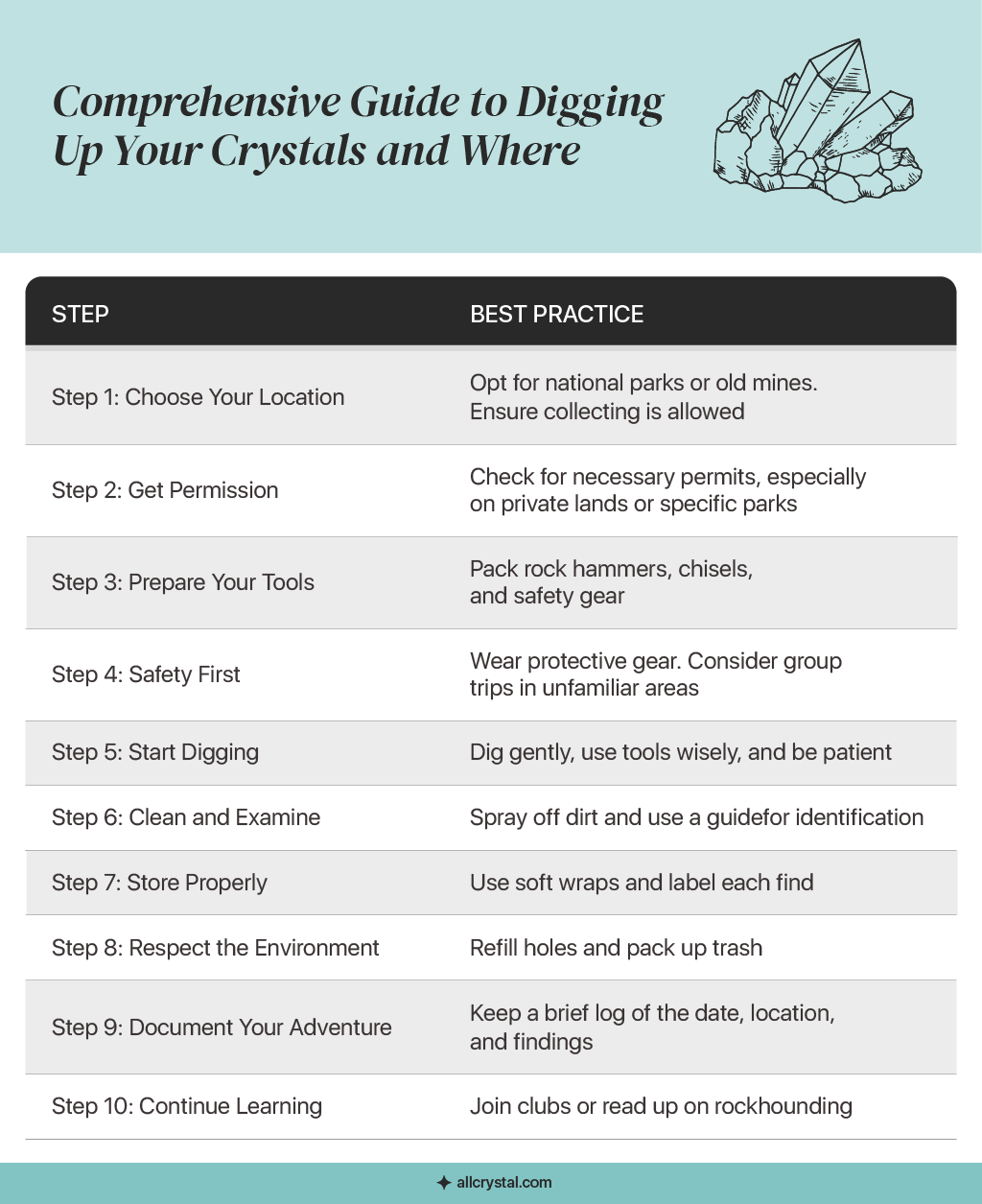
FAQs
What to Look for When Digging for Crystals?
Look for areas with loose soil, signs of mineral deposits, or places where other minerals have been found. Often, crystals form in specific types of rock or near water sources.
What is the Easiest Way to Identify Crystals?
To identify crystals, observe their shape, color, and hardness. Their geometric patterns, varying colors, and reaction to light are key indicators. A hardness test or a guidebook/app can further assist in pinpointing the crystal’s identity.
How Do You Get Crystals from Rocks?
Carefully break the rock using tools like a hammer and chisel. Once you spot a crystal, gently extract it to avoid damage. Washing or brushing can help reveal hidden crystals.


